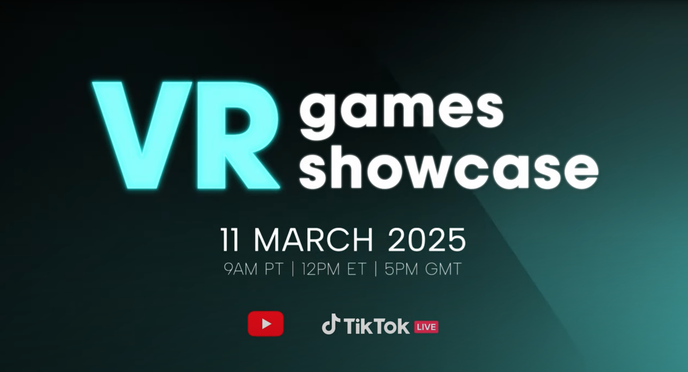VIVERSE, the spatial computing platform by HTC, is launching a new standalone service for its Polygon Streaming technology, making it available outside of VIVERSE for the first time. This empowers organisations to flexibly bring high-fidelity, interactive 3D models into their workflows across a range of devices including smartphones, tablets, laptops/PCs, or XR headsets.
Polygon Streaming combines server-side processing with client-side rendering, significantly reducing bandwidth and processing power requirements. It streams the actual 3D Data of an asset, transmitting only the necessary polygon data for the sections of the 3D model the user is looking at, and at the level of detail appropriate to their distance from the object. This device-agnostic approach ensures there’s democratized access for everyone to next-generation immersive graphics and interactivity.
A live example of Polygon Streaming can be seen here.
Joseph Lin, General Manager of VIVERSE, said, “It’s never been easier to develop 3D assets, but sharing them with others has remained a barrier. Polygon Streaming opens up new possibilities for everyone, transforming any device so people can enjoy everything from interactive product showcases, to collaboration and immersive virtual environments.”
Polygon Streaming is perfect for any industry using 3D assets, including media & entertainment, engineering, industrial design, architectural visualization, game development, and e-commerce. In these roles it’s vital to share the 3D models with people who don’t have access to advanced hardware and software. Customers and clients are often reviewing content remotely, and having to look at non-interactive static models through a screenshare or a slide deck, which can’t convey all of the details of a 3D model.
VIVERSE’s Polygon Streaming is a highly optimized rendering method that streams only the necessary polygon data for rendering the visible sections of a 3D asset. This method employs advanced techniques such as occlusion culling and adaptive levels of detail. These techniques significantly reduce rendering resources and bandwidth requirements while maintaining low latency.
Polygon Streaming has seen impressive results in testing*, with:
- Up to 8x decrease in load time
- Up to 2x increase in average FPS
- Up to 81% decrease in total project size
Polygon Streaming is versatile. It can be used for an individual object, as well as managing dozens of assets within the same world. This means entire environments can be optimised, maximizing the visual experience for users regardless of the network and device hardware limitations.
The platform intelligently and automatically adjusts based on network and hardware conditions, ensuring high visual fidelity and interactivity. This enables complex 3D assets and scenes to be rendered even on lower-end devices.
Other key features of VIVERSE’s Polygon Streaming include:
- Web-based interface: Easily upload, convert, and manage 3D assets through a web console, providing convenient access and monitoring of storage, model, project, and bandwidth usage.
- Integration with Game Engines: Polygon Streaming assets can be imported into popular game engines such as Unity and Unreal Engine, enhancing the development workflow for game developers.
- Dynamic versioning: 3D assets can be easily updated at any time, eliminating the need to roll out updates to the applications that stream them.
- WebXR Compatibility: Full compatibility with WebXR standards ensures that interactive 3D content can be experienced seamlessly in web-based and virtual and augmented reality environments.
Naoto Kato, CEO, Cluster, Inc. said, "Cluster, Inc. is continuously committed to providing the best metaverse experience for our users. We’re excited to integrate VIVERSE’s Polygon Streaming technology into our platform to allow us to deliver highly detailed and immersive environments to our users, regardless of their device capabilities. It will open endless opportunities for our developer community, and our users can experience next-generation virtual worlds with exceptional visual fidelity and interactivity, enriching the experience we provide within the Cluster platform."
“The integration of Polygon Streaming technology will enable complex 3D content to be enjoyed on XR devices, expanding their use beyond high-powered workstations. The simplicity of deployment will enhance scalability, while mitigating the limitations of client-side computing. Enhanced service infrastructure will allow for increased computing power for model visualization, aligning with growing demand,” said Sergio Barrera, Co-founder and CTO of Virtualware.
Pricing and availability
VIVERSE Polygon Streaming technology is now available in an early release with flexible pricing options starting from $99 to suit various needs. Additionally, Polygon Streaming technology is already integrated into VIVERSE for Business, the spatial collaboration platform. This integration enables highly detailed 3D assets to be easily brought into spatial environments, enhancing collaboration and visualization in various industries.
VIVERSE Polygon Streaming will be demoed at SIGGRAPH 2024 at booth 615. To sign up for Polygon Streaming, please visit www.viverse.com/polygon-streaming.
Notes:
*Performance improvements may vary based on device, content and network limitations.



